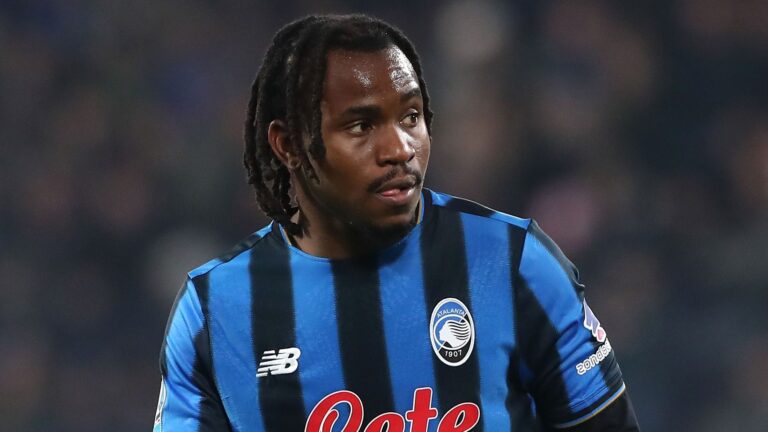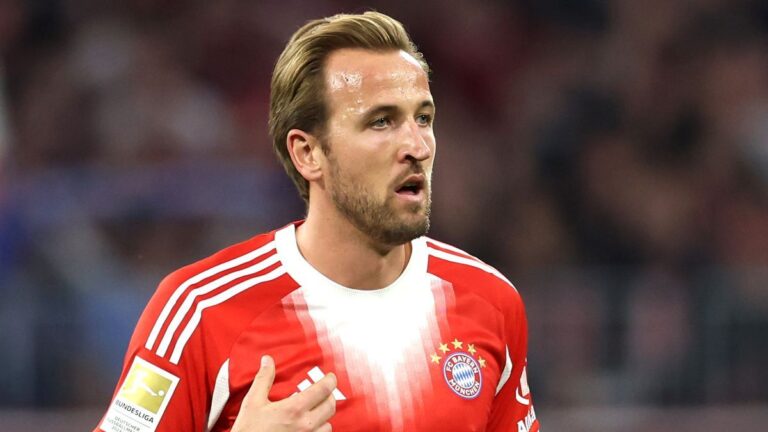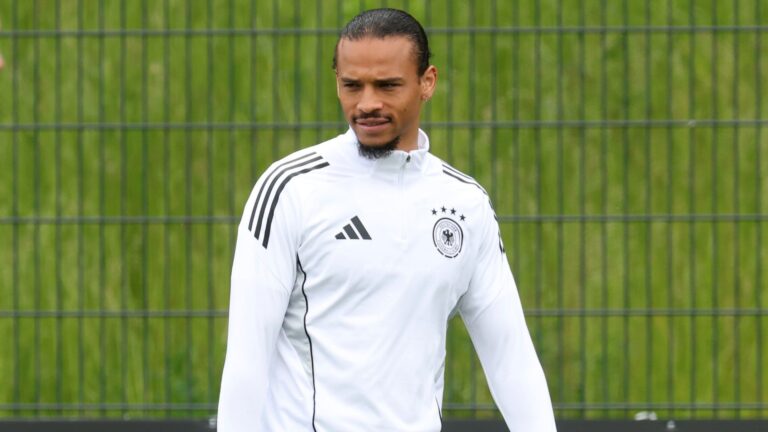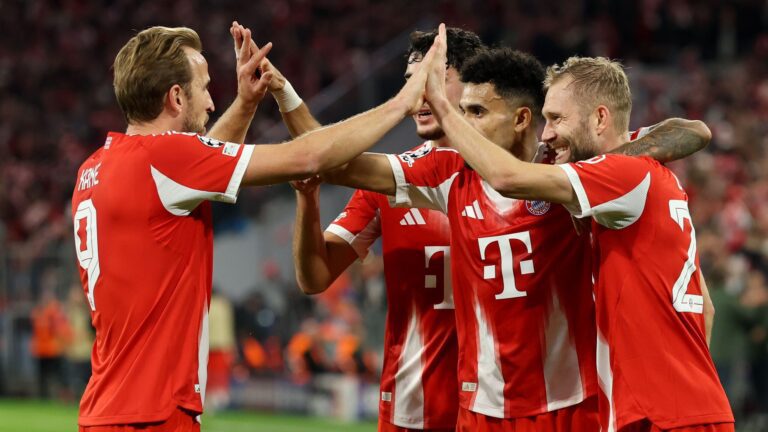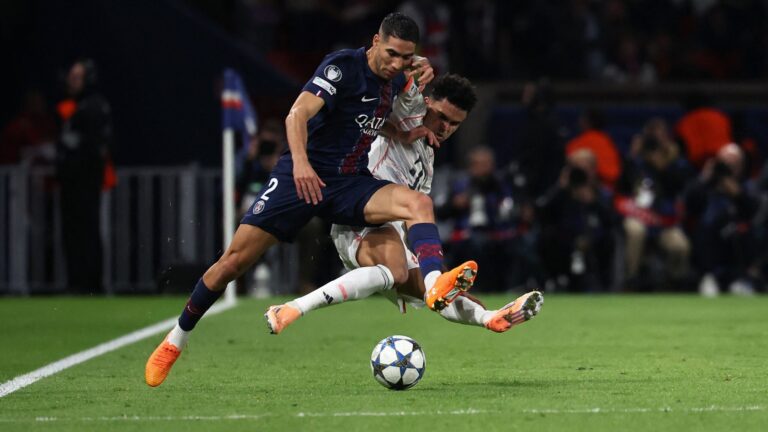Unveiling the Contrasts: Carvajal’s Take on Ancelotti and Alonso at Real Madrid
Experience the intriguing evolution in coaching philosophies at Real Madrid as veteran defender Dani Carvajal shares his firsthand observations on the distinct approaches of former manager Carlo Ancelotti and his successor, Xabi Alonso. While Ancelotti fostered a more relaxed atmosphere, Alonso brings a stricter regimen, highlighting the impact of these changes on the team’s dynamics and performance.
Dani Carvajal’s Reflections on Managerial Styles
The seasoned Real Madrid defender, who has witnessed multiple eras at the club, sheds light on the evolving leadership under Carlo Ancelotti and Xabi Alonso. Previously, players enjoyed greater autonomy during Ancelotti’s tenure, contrasting sharply with Alonso’s emphasis on rigorous structure and accountability.
Background of Carvajal’s Experience
As one of the few remaining figures from Real Madrid‘s longstanding core, Dani Carvajal stands out for having participated in every season of Ancelotti’s six-year stint at the helm. He also teamed up with Alonso on the field back in the 2013-14 campaign. In contrast to Ancelotti’s permissive style that extended to both game time and personal matters, Alonso is widely seen as prioritizing order and precision above all.
Reasons for the Transition
In an interview with COPE, Carvajal expressed, “Ancelotti remains an iconic figure in Real Madrid‘s legacy and will forever hold that status, yet I believe a fresh direction was essential. It seems the coach recognized this as well. After so many years together, a shift was necessary to refresh the group’s focus; it helps bring disengaged individuals back into the fold and energize the entire squad, and honestly, it’s proven beneficial for all involved.”
“Every manager brings their unique strategy, shaped by their experiences and eras. Indeed, under Carletto, we benefited from considerable leeway, such as extending our downtime slightly, even if it occasionally led to his frustration. Alonso, on the other hand, adopts a more straightforward method with heightened emphasis on order, but ultimately, each leader follows what they deem most effective. The game of football has deep roots, allowing coaches to adapt strategies as they see fit.”
Alonso’s Promising Start
Xabi Alonso’s leadership at the Santiago Bernabeu has begun on a positive note. Following a setback in the Club World Cup during July, Real Madrid enters the international break leading La Liga, having secured victories in all three opening matches. Upcoming challenges include a match against Real Sociedad at the Reale Arena on September 13, followed by a Champions League league phase encounter with Marseille just three days later.
- Carvajal discusses the distinctions between Ancelotti and Alonso
- Notes that the Italian coach offered greater flexibility compared to his replacement
- Indicates that the new coach maintains a more candid approach



Xabi Alonso’s Tactical Approach Compared to His Predecessor
When it comes to Xabi Alonso’s role as a manager, one of the most talked-about aspects is how his style has been deemed more direct than that of his predecessor, Carlo Ancelotti. Fans and analysts have noted a shift in emphasis on quick, forward-thinking plays, which contrasts with Ancelotti’s more fluid and player-driven approach at Real Madrid. This change highlights the evolving landscape of football tactics in top European leagues, where managers like Alonso are pushing for greater efficiency in transitions and attacking phases.
Key Elements of Alonso’s More Direct Style
Alonso’s tactics often prioritize rapid ball movement and direct routes to goal, relying on the speed and precision of his players to break down defenses. This approach stems from his own playing career, where he was known for intelligent passing and controlling the midfield. According to discussions in football communities, Alonso’s strategies haven’t fully transformed Real Madrid’s playstyle yet, with some attributing successes to individual brilliance rather than team-wide tactics.
- Faster Transitions: Teams under Alonso tend to focus on quicker counter-attacks, reducing the time spent in build-up play compared to Ancelotti’s possession-heavy style.
- Emphasis on Wing Play: There’s a noticeable increase in utilizing the flanks for direct crosses and overlaps, which can catch opponents off guard.
- Defensive Pressing: Alonso incorporates higher pressing to regain possession higher up the pitch, leading to more direct scoring opportunities.
This directness is seen as a modern evolution, but it hasn’t been without challenges, as it requires precise execution from the squad.
Insights from Dani Carvajal on Coaching Changes
Dani Carvajal, a stalwart defender for Real Madrid, has openly discussed the need for a coaching change, pointing to how Alonso’s methods differ from what the team was accustomed to under Ancelotti. Carvajal’s comments reflect a broader sentiment in the locker room about adapting to new tactical demands while appreciating the freedom that Ancelotti provided.
Carvajal’s Perspective on Tactical Shifts
In his remarks, Carvajal admits that the transition to Alonso’s system has highlighted areas where the team needs to evolve, such as in defensive organization and quick decision-making. He praises Ancelotti’s freedom for allowing players to express themselves creatively, which fostered a more relaxed environment. However, Carvajal sees Alonso’s direct approach as a necessary step forward for maintaining competitiveness in La Liga and the Champions League.
- Adapting to New Demands: Carvajal notes that Alonso’s tactics require defenders to be more involved in build-up play, shifting from a reactive role to a proactive one.
- Balancing Freedom and Structure: While Ancelotti gave players like Carvajal the liberty to make on-the-fly decisions, Alonso’s style imposes more structured patterns, which can enhance team cohesion but might feel restrictive initially.
- Potential Benefits: Carvajal highlights how this directness could lead to fewer turnovers and more clinical finishes, ultimately improving Real Madrid’s overall performance in high-stakes matches.
These insights underscore the human element in football management, where player buy-in is crucial for any tactical overhaul.
Praising Ancelotti’s Freedom in the Context of Managerial Evolution
While Xabi Alonso brings a more direct philosophy, it’s worth exploring how Ancelotti’s freedom-based tactics laid the groundwork for current strategies. Ancelotti’s era at Real Madrid was defined by empowering players to leverage their individual skills, which resulted in memorable successes, including multiple Champions League titles. This contrasts with Alonso’s structured approach, creating an interesting debate among fans about the best path forward.
How Ancelotti’s Freedom Influenced Players
Ancelotti’s style emphasized player autonomy, allowing stars like Carvajal to thrive in open-ended roles. This freedom encouraged creativity and adaptability, which some argue was key to Real Madrid’s dominance. In comparison, Alonso’s tactics aim to streamline that freedom into a more direct framework, focusing on efficiency over experimentation.
- Creative Liberty vs. Direct Efficiency: Ancelotti’s teams often excelled in unscripted moments, whereas Alonso seeks to minimize risks through direct plays.
- Impact on Team Dynamics: Players like Carvajal have credited Ancelotti for building confidence, but they recognize that Alonso’s methods could lead to long-term tactical advantages.
- Lessons for Future Managers: This shift illustrates how modern coaching might blend Ancelotti’s freedom with Alonso’s directness, potentially creating a hybrid style that’s both innovative and reliable.
The Role of Player Feedback in Tactical Decisions
Player feedback, as voiced by individuals like Dani Carvajal, plays a pivotal role in shaping how coaching changes unfold. In discussions around Alonso’s tenure, there’s a clear emphasis on the need for managers to listen and adapt, ensuring that direct tactics don’t overshadow the creative elements that made Ancelotti successful.
Examples of Successful Adaptations
- Real Madrid’s Mid-Season Adjustments: Teams often tweak strategies based on player input, such as incorporating more direct set-pieces while retaining elements of creative freedom.
- Comparative Analysis with Other Leagues: In the Bundesliga, where Alonso has experience, similar direct approaches have led to quick turnarounds, offering a blueprint for Real Madrid.
- Long-Term Benefits: By blending Alonso’s directness with Ancelotti’s philosophies, clubs can foster a more versatile squad capable of handling various competition styles.
This ongoing evolution in coaching philosophies keeps football engaging and relevant, with keywords like “Xabi Alonso tactics” and “Ancelotti’s freedom” frequently appearing in fan analyses on SEO-friendly sports forums.
Wrapping Up Key Tactical Comparisons
To delve deeper, Alonso’s direct approach versus Ancelotti’s freedom can be quantified through performance metrics, such as pass completion rates and possession stats. For instance, discussions highlight that Alonso’s setups lead to higher average speeds in attacks, potentially improving conversion rates in key matches.
Statistical Breakdowns
- Attack Speed Metrics: Data from Alonso’s games shows an increase in direct passes, which could correlate with faster goal-scoring opportunities.
- Defensive Improvements: Carvajal’s admission points to better-organized defenses under Alonso, reducing counter-attack vulnerabilities.
- Overall Impact: Blending these elements might help Real Madrid maintain their edge, with players praising the balance between structure and creativity.
In football circles, staying updated on “coaching change in Real Madrid” and “Dani Carvajal insights” ensures fans are in the loop.[reference:[reference:https://www.redcafe.net/threads/xabi-alonso-real-madrid-manager-sack-watch.473389/page-41][reference:[reference:https://www.reddit.com/r/LiverpoolFC/comments/1abxy5l/good_video_explaining_xabi_alonsos_tactics_and/]


